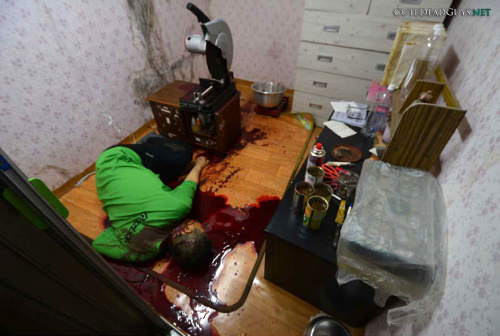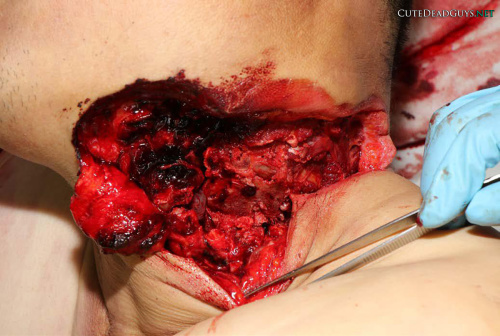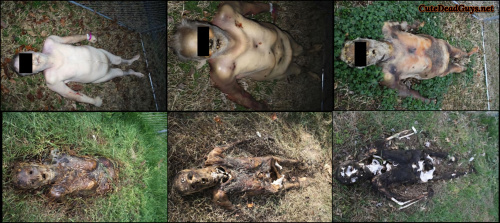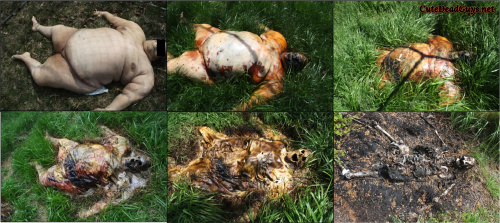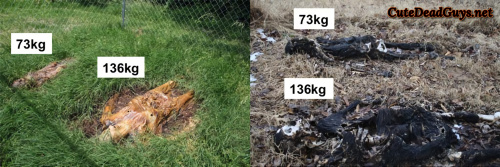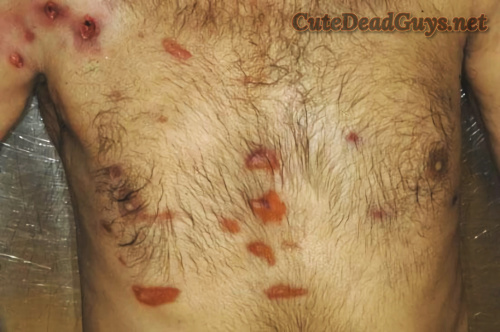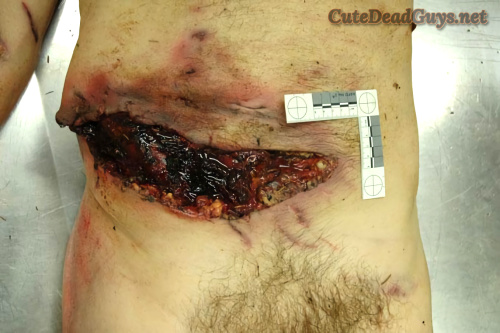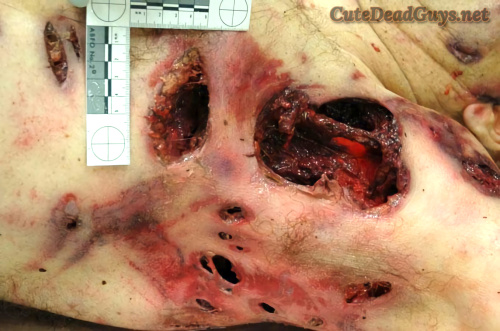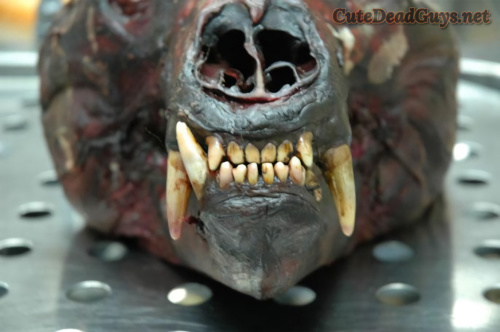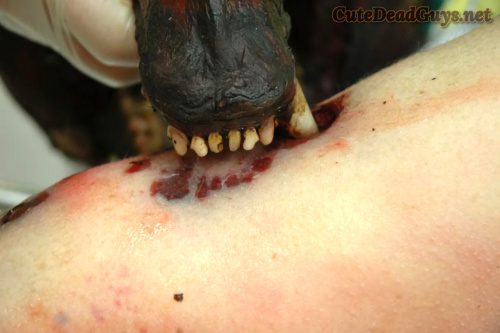
On a rainy September day, a 32-year-old man was working on a 50-m (164 ft) high Ferris wheel, which had to be dismantled after the end of a local carnival. He was working on the axis of the Ferris wheel at a height of 28 m (92 ft). He wore a safety harness and special work shoes. Witnesses stated that his safety rope was fixed to his safety harness, but not to the Ferris wheel. In this way, the man was not protected against falling. He suddenly lost his grip and probably slipped on the wet metal. He then fell to the ground. Witnesses saw the man in a head-first fall onto the base of the Ferris wheel and hit his head on the edge of the metal platform.

End position after the fatal fall with destroyed skull. Black arrow: point of first impact with smashed brain tissue. White arrow: fragment of the cranial roof.

Corpse covered with a grey blanket. In front of the corpse is the point of the first impact of the head (black arrow). From here, a splash pattern of blood and smashed brain tissue extend towards upper edge and right upper corner of the image.

Destroyed head with a disrupted scalp, fragmental fracture of the cranial roof, ruptured dura mater and missing brain.

